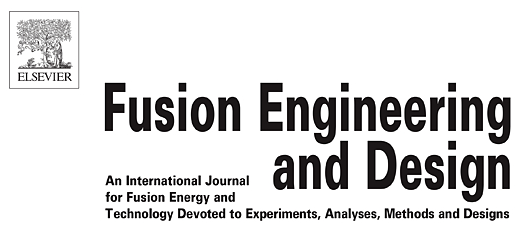
The final goal of fusion power plants is to produce electricity in the grid. This is planned to be done by heating up water as with fission power plants or thermal power stations. In the case of magnetically confined fusion, neutrons released from the hot fusion plasma escape the magnetic confinement and finish in the wall heating up water. In the case of DEMO (DEMOnstration power plant), the neutron production will be large and the reactor materials have to be neutron-resistant. Thereby, neutronics becomes an increasingly important field of study.
Our recent paper published in the journal of Fusion and Engineering Design entitled “Validations of the radiation transport module NEUTRO: a deterministic solver for the neutron transport equation“ reports on our on-going efforts in this field, carried out in collaboration with the CNEA-CONICET in Buenos Aires (Argentina). It can be accessed for free via this link during the first 50 days after the publication.
To simulate the neutron transport equation we have developed NEUTRO, a new module inside the Alya framework. Our recent papers reports the further development of this module within the framework of our ongoing FusionCAT project. In particular, we have validated it and included nuclear data which brings the code forward and improves it significantly. The module has been validated against the SINBAD benchmarks and we used the NJOY code to read nuclear data from the ENDF/B-VIII.0 database.
Alya is one of the largest and most advanced computational mechanics codes developed by the CASE department at BSC. Alya has been applied to many domains thanks to the multi-physics approach and has been able to solve complex coupled problems such as combustion or cardiovascular system simulation.
The NEUTRO module is implemented using the Finite Element Method and is a deterministic code capable of computing the neutron transport equation throughout all the geometry as opposite to Monte Carlo codes. The article reviews the most essential concepts of neutron transport from the Boltzmann equation to nuclear data and validation benchmarks. It aims to be instructive and self-contained to describe the numerical approximation used for the solutions as well as the performance in a supercomputer of the model.
As a next step, we will couple the NEUTRO module with the various other physics modules available in Alya and used in other research lines at BSC, to solve couple high fidelity and high demanding computational problem of the first wall for the realization of DEMO .
The FusionCAT project with reference number 001-P-001722 has been co-financed by the European Union Regional Development Fund within the framework of the ERDF Operational Program of Catalonia 2014-2020, with the support of Generalitat of Catalonia.
